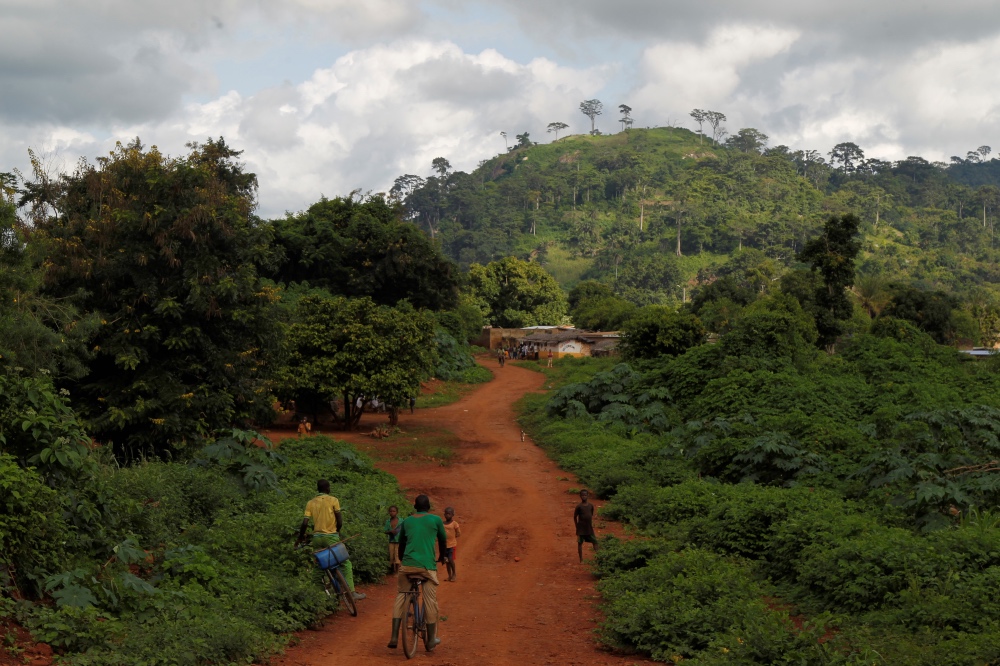Kuala Lumpur
Thomson Reuters Foundation
The amount of planet-warming carbon dioxide that can be sucked up from the atmosphere and stored by tropical forests is falling as the global climate heats up, researchers said on Wednesday.
They warned in a study that rainforests could tip from absorbing carbon to becoming a source of emissions faster than scientists had previously expected – a switch that could happen in the Amazon as early as the mid-2030s.

A view of Mont Peko National Park in Duekoue department, western Ivory Coast on 2nd August, 2016. PICTURE: Reuters/Luc Gnago .
“The cause of this is climate change impacts – in terms of heat stress and droughts – on these remaining intact forests,” said Simon Lewis, a senior author of the study published in the journal Nature and a professor at Britain’s University of Leeds.
The evidence that forests had started the process of turning from a carbon sink into a source was “incredibly worrying”, he told the Thomson Reuters Foundation.
“Humanity has been really lucky so far in that these forests have been mopping up our pollution, and they might not keep doing that for that much longer,” he added.
Large swathes of rainforest, including those in Indonesia, Brazil and Democratic Republic of Congo, help regulate rainfall, prevent flooding, protect biodiversity and limit climate change.
But the 30-year study, led by the University of Leeds and involving almost 100 institutions, showed that the intake of carbon by “intact tropical forests” peaked in the 1990s and had dropped by a third by the 2010s.
Intact forests are large areas of continuous forest with no signs of intensive human activity like agriculture or logging. They form part of the world’s roughly 5.5 billion hectares of forest.
Trees suck carbon dioxide from the air, the main greenhouse gas heating up the Earth’s climate, and store carbon, which they release when they are cut down and are burned, or rot.
Tropical forests are huge reservoirs of carbon, storing 250 billion tonnes in their trees alone – an amount equivalent to 90 years of global fossil-fuel emissions at current levels.
Scientific models have typically predicted that the role of tropical forests in storing carbon would continue for decades.
But their ability to offset human emissions is declining faster than thought, Lewis said.
“After years of work deep in the Congo and Amazon rainforests, we’ve found that one of the most worrying impacts of climate change has already begun,” he said. “This is decades ahead of even the most pessimistic climate models.”
The way to maintain tropical forests as carbon sinks “is to stabilise the climate” by cutting emissions, mainly from fossil-fuel use, to “net zero”, said Lewis.
Deadly droughts
Researchers, who tracked the growth and death of 300,000 trees in Africa and the Amazon, found that undisturbed tropical forests had started the process of switching from a carbon sink to a source, largely due to carbon losses from trees dying.
“Extra carbon dioxide boosts tree growth, but every year this effect is being increasingly countered by the negative impacts of higher temperatures and droughts which slow growth and can kill trees,” said study lead author Wannes Hubau of the Royal Museum for Central Africa in Belgium.
“Our modelling of these factors shows a long-term future decline in the African sink and that the Amazonian sink will continue to rapidly weaken, which we predict to become a carbon source in the mid-2030s,” he added in a statement.
In the 1990s, intact tropical forests removed about 46 billion tonnes of carbon dioxide from the atmosphere, declining to an estimated 25 billion tonnes in the 2010s, the study said.
The lost sink capacity was 21 billion tonnes of carbon dioxide – the same as a decade of fossil-fuel emissions from Britain, Germany, France and Canada combined, it added.
Intact tropical forests removed 17 per cent of human-made carbon dioxide emissions in the 1990s but that fell to six per cent in the 2010s.
The decline was because those forests, whose area shrank by 19 per cent, absorbed a third less carbon, while global carbon emissions soared by 46 per cent, the study said.
The tropics lost 12 million hectares of tree cover in 2018, including 3.6 million hectares of old-growth rainforest, an area the size of Belgium, much due to fires, land-clearing for farms and mining, according to monitoring service Global Forest Watch.






